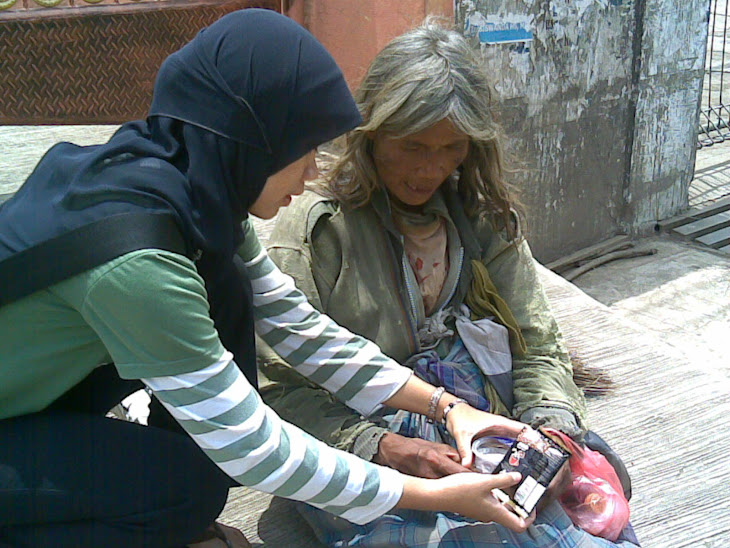INTRODUCTION
Violence is linked to power. The persistence of violence against women is a manifestation of historitically unequal power relations between man and women. Nurses concerned with promoting mental health require an understanding of the nature of violence, including the historitical, sociological and psychological faktor that constitute. Violence occurs on acontinuum that ranges from verbal “put down” to psyical injury and death.
Domestic violence, also known as domestic abuse, spousal abuse, child abuse or intimate partner violence (IPV), can be broadly defined a pattern of abusive behaviors by one or both partners in an intimate relationship such as marriage, dating, family, friends or cohabitation. Domestic violence has many forms including physical aggression (hitting, kicking, biting, shoving, restraining, throwing objects), or threats thereof; sexual abuse; emotional abuse; controlling or domineering; intimidation; stalking; passive/covert abuse (e.g., neglect); and economic deprivation. Domestic violence may or may not constitute a crime, depending on local statues, severity and duration of specific acts, and other variables. Alcohol consumption and mental illness have frequently been associated with abuse.
TYPES DOMESTIC ABUSE
The form and characteristics of domestic violence and abuse may vary in other ways. Michael P. Johnson (1995, 2006b) argues for three major types of intimate partner violence. The typology is supported by subsequent research and evaluation by Johnson and his colleagues,as well as independent researchers. Distinctions need to be made regarding types of violence, motives of perpetrators, and the social and cultural context. Violence by a man against his wife or intimate partner is often done as a way for men to control "their woman". Other types of intimate partner violence also occur, including violence between gay and lesbian couples, and by women against their male partners. Distinctions are not based on single incidents, but rather on patterns across numerous incidents and motives of the perpetrator. Types of violence identified by Johnson:
• Common couple violence (CCV) is not connected to general control behavior, but arises in a single argument where one or both partners physically lash out at the other. Intimate terrorism is one element in a general pattern of control by one partner over the other. Intimate terrorism is more common than common couple violence, more likely to escalate over time, not as likely to be mutual, and more likely to involve serious injury.
• Intimate terrorism (IT) may also involve emotional and psychological abuse.
• Violent resistance (VR), sometimes thought of as "self-defense", is violence perpetrated usually by women against their abusive partners.
• Mutual violent control (MVC) is rare type of intimate partner violence occurs when both partners act in a violent manner, battling for control.
• situational couple violence, which arises out of conflicts that escalate to arguments and then to violence. It is not connected to a general pattern of control. Although it occurs less frequently in relationships and is less serious than intimate terrorism, in some cases it can be frequent and/or quite serious, even life-threatening. This is probably the most common type of intimate partner violence and dominates general surveys, student samples, and even marriage counseling samples.
Types of male batterers identified by Holtzworth-Munroe and Stuart (1994) include "family-only", which primarily fall into the CCV type, who are generally less violent and less likely to perpetrate psychological and sexual abuse. IT batterers include two types: "Generally-violent-antisocial" and "dysphoric-borderline". The first type includes men with general psychopathic and violent tendencies. The second type are men who are emotionally dependent on the relationship. Support for this typology has been found in subsequent evaluations. Others, such as the US Centers for Disease Control, divide domestic violence into two types: reciprocal violence, in which both partners are violent, and non-reciprocal violence, in which one partner is violent.
THE CYCLE OF VIOLENCE
• Tension-building Stage
Is characterized by such minor incidents as pushing, solving, and verbal abuse
• Acute Battering Stage
During the Acute Battering Stage, the abuser release the built-up tension by brutal and uncontrollable beatings. The abuser ussually has complete amnesia and does not remember what happened during the battering. The victim usually depersonalizes the incident and is able to remember the beatings in detail. After beatings, both are in shock.
• Honeymoon Stage
Is characterized by kidness and loving behaviors. The abuser feel remorseful and apologetic and may bring presents, make promises, and generally tell the victim how much she or he is loved and needed. The cycle will repeat itself. The honeymoon stage will fade away aas tension starts to build
Without treatment, violence never diminishes but almost always escalates in frequency and intensity
Nursing Assessment
Nursing Documentation
Thorough medical records and complete documentation is crucial in preventing any further domestic violence to a victim. Complete medical documentation can be the most credible evidence in a victim’s case against their abuser. It can also be used as evidence to obtain a range of protective relief such as a restraining order. Medical records can help corroborate the police reports and data. This may help in strengthening the victim’s case. It is also extremely important that the documentation be very detailed with both written statements and all possible photo’s of the victim and their injuries. Here is some information that nurses/medical personnel should make sure is document in the victim’s chart.
• Complete medical and social history
• Multiple close-up photographs in color of each injury
• Documentation should be very detailed-including a body map of injuries
• Handwriting should be very legible
• Try and avoid using medical abbreviations- that way there is no misinterpretations of the records
• Include all the victim’s laboratory test, x-rays and any other diagnostic procedures
• Place the victim/patient’s statements within quotation marks as often as possible
• Avoid statements like “patient claims” or “patient alleges”
• Include names of all personnel (medical and law enforcement) that came in contact with the victim that day
• Note how the patient was acting/demeanor at the time of evaluation
• Be sure to include the specifics about the abusive incident- including any details about past abuse
• Finally, make sure to describe the person who harmed the victim in the victim’s own words-make sure to include the relationship between the victim and the abuser
Nursing intervention
Early identification of abuse is key in helping a victim to be safe and providing them with the appropriate resources. When domestic violence is suspected or confirmed the nurse will want to gather resources within the community to help establish interventions that will provide for a safe environment, provide support, and offer protection. In addition the nurse wants to listen to the victims concerns and believe what the victim is telling them. The National Domestic Hotline will help the nurse find resources within the community such as safe house to protect the victim and their children, and other support systems to help meet the victim’s needs. The nurse should also offer support and reassurance that confidentiality will be protected and that the nurse will help the victim with decisions that need to be made. The victim should also be reassured that intimate partner abuse is not normal and there are support groups and legal actions to help the victim not stay in an abusive situation. The best intervention for victims of intimate partner violence is to get involved and know what resources are available to help victims of domestic violence.
Nursing planning with victim on a safety plan
Every patient or victim who has a positive screening for domestic violence or intimate partner violence as the situation is known,[173] should know that there are resources available to them within his or her community for getting help. Victims need to have a safety plan for themselves and any children. Statistics show that a typical abuser has a pattern or cycle of abuse that repeats and even escalates during the relationship. It is rare that abuse is a one time occurrence.
Victims are often frightened, isolated, without financial resources, caring for small children, and unable to take charge of their own decisions. They may be unable to make simple choices without careful intervention by the nursing community. A number one priority for nurses and all health care professionals is to help find the victim a safe environment for themself and any children. Many safe houses exist throughout the U.S and elsewhere for this reason. Besides being an emergency shelter, a safe house is set up to provide other confidential services to IPV vicitms. Counseling, referrals for schooling and job placement, court accompaniment or day care are some of the benefits available to the person. Most communities will have a list of safe houses plus help resources and support systems in place.
Reference:
1. Antai-Ontong,Debora.1995.Psychiatric Nursing Biological&Behavioral
Concept.Philadelphia Pennsylvania,W.B Suunders Company
2. Keltner,Schwecke Bostrom.1995.2nd ed. Psychiatric Nursing. St.Louis
Missouri. Mosby-Year Book,Inc
3. Stuart&Sundeen.1995.Principles&Practice of Psychiatric Nursing.5th
ed. St.Louis. Missouri Mosby-Year Book,Inc
4. Frisch,Noreen Cavan & Lawrence E.Frisch.2005. Psychiatric Mental
Health Nursing.3rd ed. Canada,Tomsonrights
5. Clinton,Michael. 1996. Mental health and Nursing Practice.
Australia, Prentice Hall.
6. Fortinash,Katherine M.2007.Psychiatric Nursing Care Plans.5th ed.
USA, Mosby-Elsevier.
7. www.wikipedia.com
Senin, 14 Desember 2009
Langganan:
Posting Komentar (Atom)
.jpg)




Tidak ada komentar:
Posting Komentar